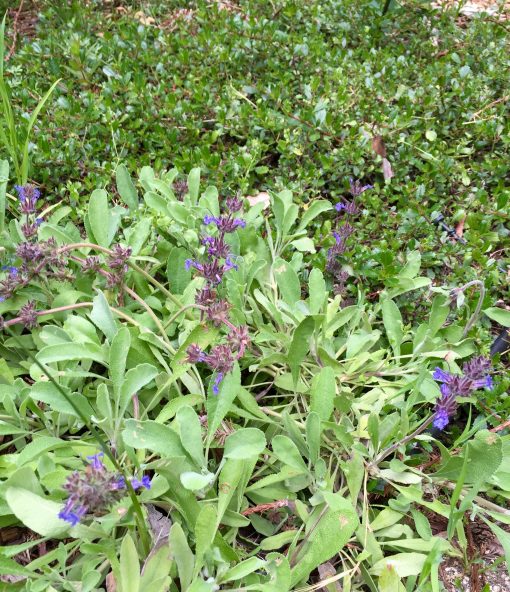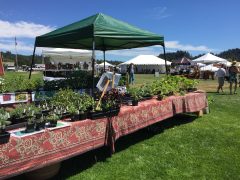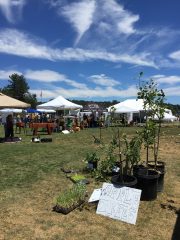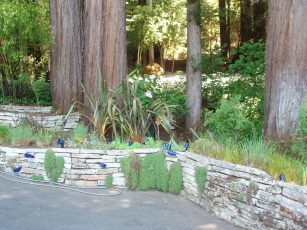
We all want to do the right thing for the environment by reducing our carbon footprint and becoming good stewards of the land. We want to build our landscapes with green products and incorporate sustainable practices in the garden. A good way to do this is to create gardens that offer food and beauty for people while providing habitat and other benefits for the rest of nature.
Permaculture is the fancy name for this approach to garden design. When you garden using organic fertilizers and organic pesticides you reduce pollution in the environment. When you plant edibles like fruits, vegetables and herbs in your yard, you create a more natural landscape that takes better care of itself while yielding a plentiful harvest of plants for food.
You can put these ideas to work in your own garden by using water more efficiently and carefully selecting and siting plants. Deep rooted trees like fig, mulberry, peach and plum help break up heavy soil and shade the plants beneath them. Planting drought tolerant trees creates shade which in turn slows the evaporation of moisture from soil and prevents erosion.
Group plants with similar water needs. Grow thirsty plants in the lowest areas of your garden where more water collects. You might install a rain garden in an areas like this. A rain garden is simply a planted depression designed to absorb run-off from areas like driveways, walkways, roofs and compacted lawn ares. The rain garden acts to replenish ground beds while preventing water from running into storm sewers, streams and creeks.

soil and conserves moisture as does ceanothus ‘Heart’s Desire’.
Plant dry climate plants like lavender, rosemary and sage in open, sunny areas and drought tolerant ground covers like Bee’s Bliss salvia and ceanothus ‘Anchor Bay’ or ‘Heart’s Desire’ to shade the soil and conserve moisture. Use less turf grass and more walkable ground covers where possible.
Place hardy perennials like artichoke, butterfly bush and rhubarb under tree canopies to conserve moisture. In general, use deep-rooted, low maintenance perennials that provide food and also shade for plants underneath.
For food, plant fruit trees, berries, nuts, herbs and vegetables. To create habitat, plant fennel, spearmint and yarrow for beneficial insects; butterfly bush and sage for pollinators such as bees and hummingbirds, ceanothus and other native shrubs and trees for birds and other wildlife.
To improve soil structure, plant deep rooted plants to break up heavy soils and add organic matter. You can plant rhubarb, bear’s breech or other large leaf plants for a living mulch. Using wood based mulch on garden beds helps contain moisture in the soil, too. To provide soil with nitrogen, plant ceanothus, clover, legumes like beans, and peas and lupine. To supply minerals as compost or mulch plant chives, comfrey, garlic and yarrow. Yarrow is often planted in young orchards to bring nutrients near the top of the soil for young trees to use. S
Sustainable landscapes do not have to look like a weed patch. With a little planning your garden can be beautiful and productive.




